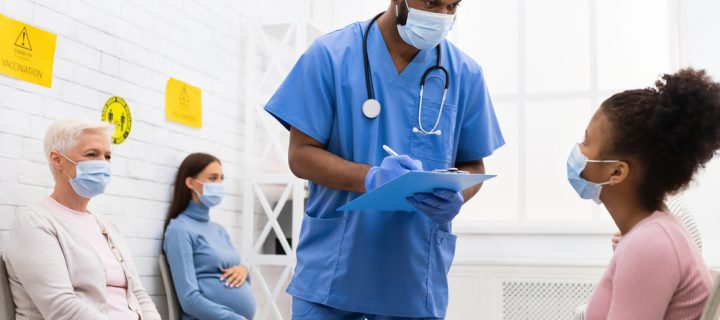You should be given information about your vaccine, be monitored, and be introduced to the tool V Safe.
Millions of people in the US and elsewhere have now gotten a COVID-19 vaccine. Once you manage to get an appointment to have it done, being inoculated is relatively easy. All you need do is sit still, get comfortable, and allow yourself to be poked in the arm with a needle. Simple. According to the Centers for Disease Control and Prevention (CDC), there are some protocols clinics should be adhering to in order to get things done properly, however. What should you expect? Here are four things that should happen at your COVID-19 vaccination appointment, according to the CDC.
Receive a Vaccination Card
Once you have been vaccinated for COVID-19, you should expect to be given a vaccination card or a sort of printout. This paper holds information indicating which vaccine you received. It also states when and where you got it. If you aren’t given a vaccination card, inquire as to why.
Receive a Fact Sheet
There are two COVID-19 vaccines, (those of Pfizer-BioNTech and Moderna), now being given in the US and Canada. More are on their way from other pharmaceutical companies in the coming days. It’s important that you know which vaccine you are receiving. This is because some vaccines require you to get a second dose, and the time span between doses can differ. After being vaccinated you should be given a fact sheet about your vaccine. There can be varying risks and benefits to different vaccines, and you should know about them.
Related: What We Know About Allergic Reactions to Vaccines
Be Monitored for Allergic Reactions
Whether or not you are known to be allergic to vaccines, you should be monitored after receiving your COVID inoculation. This is for any potential adverse reactions. You should be asked to stay in the clinic for at least 15 minutes following your shot. If you have had a severe allergic reaction to a vaccine in the past, the CDC states you should be monitored on-site for at least 30 minutes.
Some known non-allergic reactions to vaccines include soreness at the injection site, and flu-like symptoms. These reactions are normally brief, lasting just one or two days. If you feel uncertain about a reaction you are having to your COVID-19 vaccine, contact your doctor or visit your local emergency department.
Informed About V-Safe
A good way to stay safe following your vaccination is to use V-Safe. V-Safe is a free smartphone tool launched by the CDC that allows you to report any adverse side effects you experience. The tool also reminds you when it’s time to get your second dose, if you need to. After being vaccinated in the US, you should be told about this tool and how it works. You aren’t required to use it, but it can help.
Getting a COVID-19 vaccine is an excellent way to help protect yourself and your community from the risks of severe novel coronavirus infection during the pandemic. It’s important to remember that you won’t be protected from falling sick immediately after getting your vaccine, and that it takes a few weeks for your body to produce enough antibodies to be immune to COVID-19. Experts say you can expect to experience protection against the virus one to two weeks after getting your second shot, when it comes to coronavirus vaccines that require two shots.
The CDC is recommending that you get your second shot as closely as possible to the recommended timeline. Being exactly on-schedule isn’t necessary, however. You should not get your second vaccine earlier than recommended, but know that there is no maximum interval between your first and second shots when it comes to either the Moderna vaccine or that of Pfizer-BioNTech.
Stay safe. Wear a mask even after being vaccinated, practice social distancing, and wash your hands frequently. The pandemic is still with us.
photo credits: Prostock-studio/Shutterstock.com











